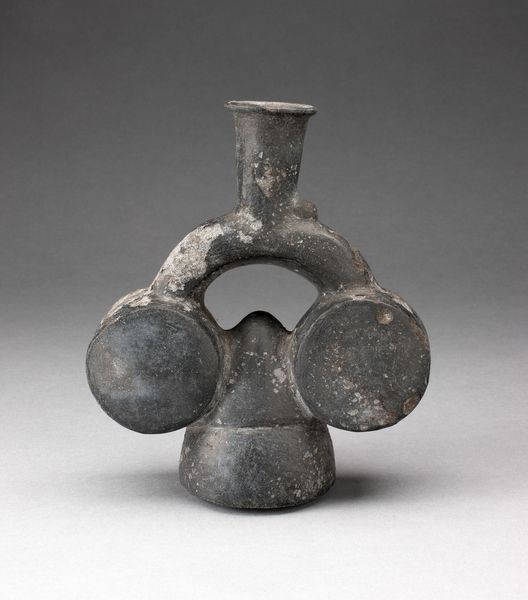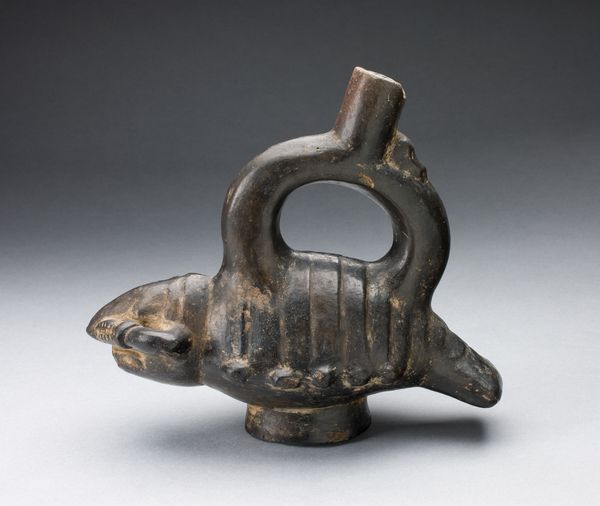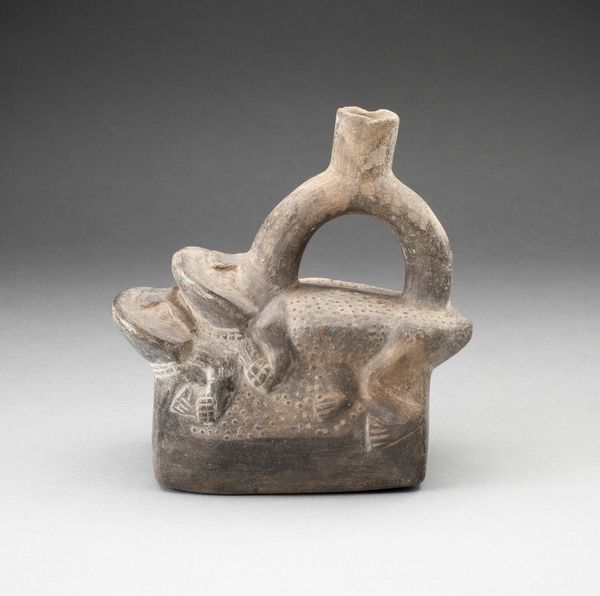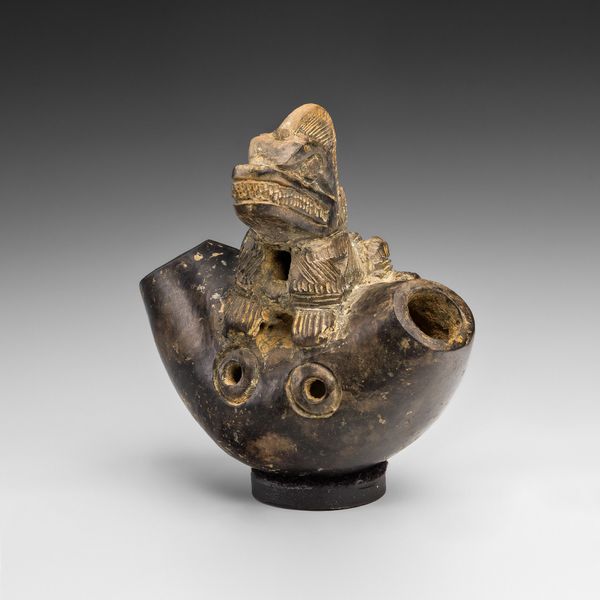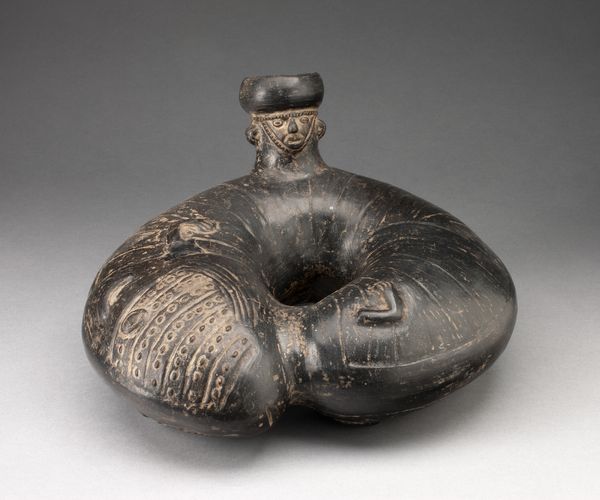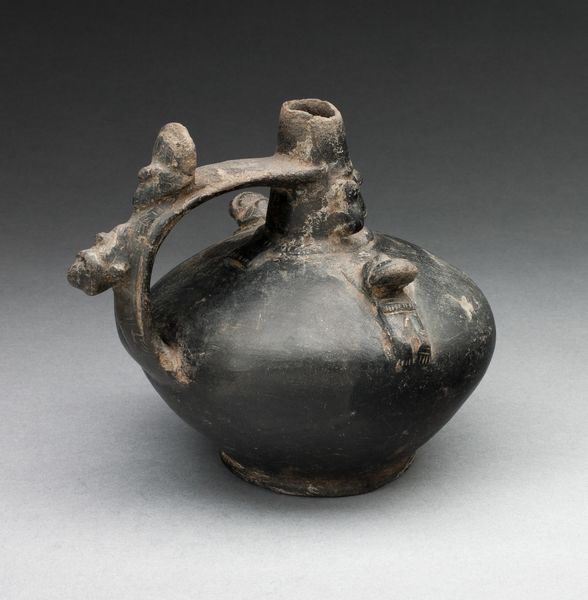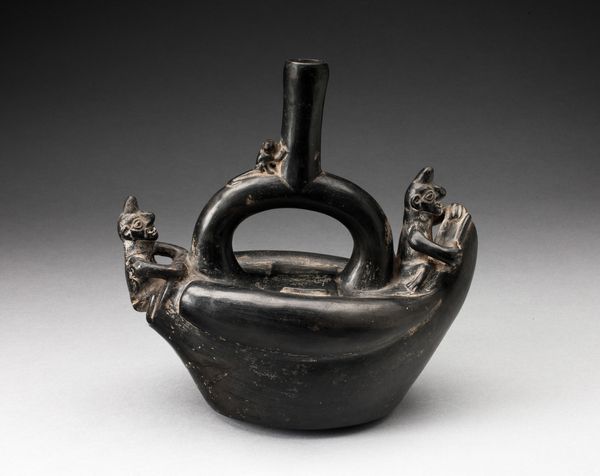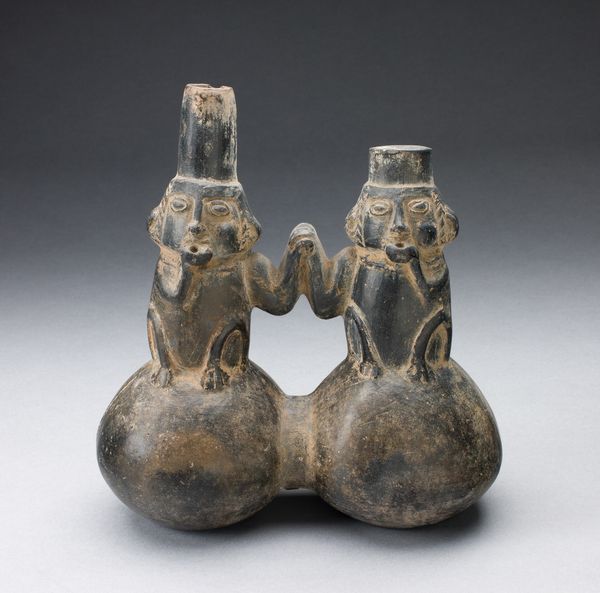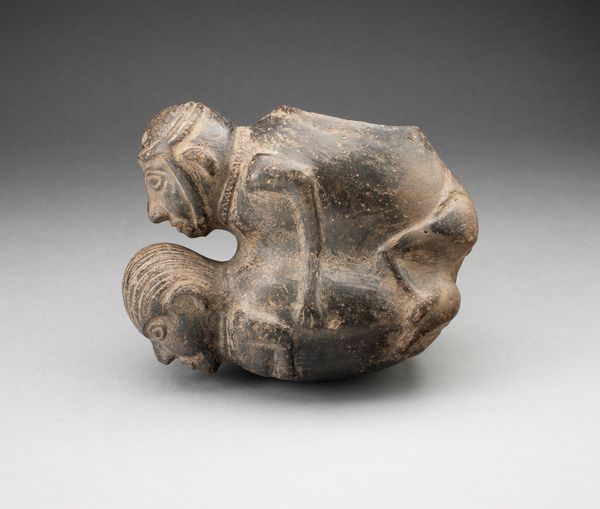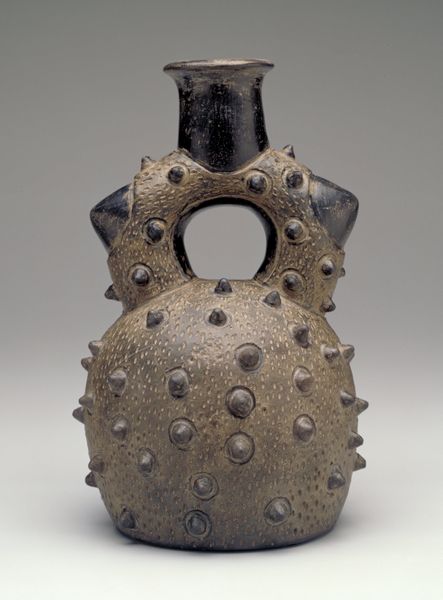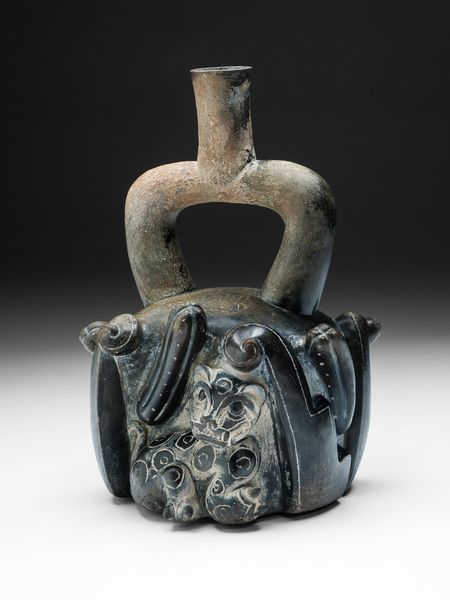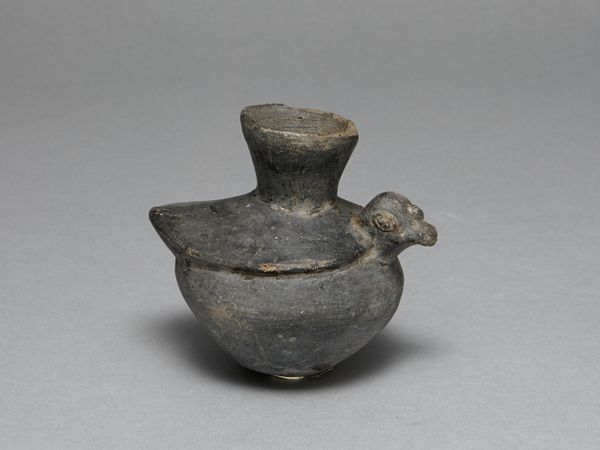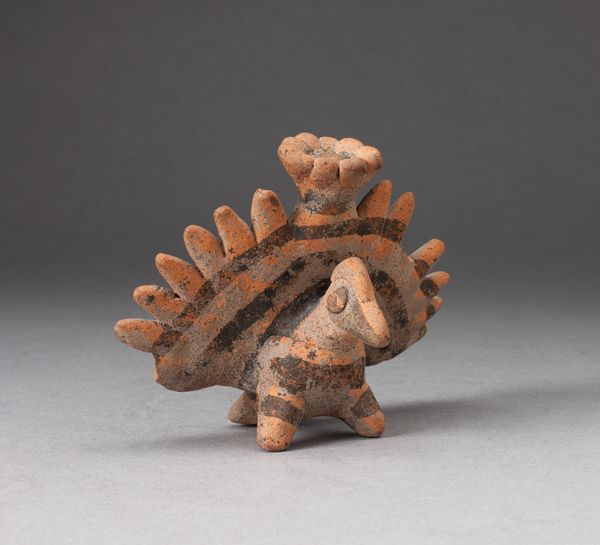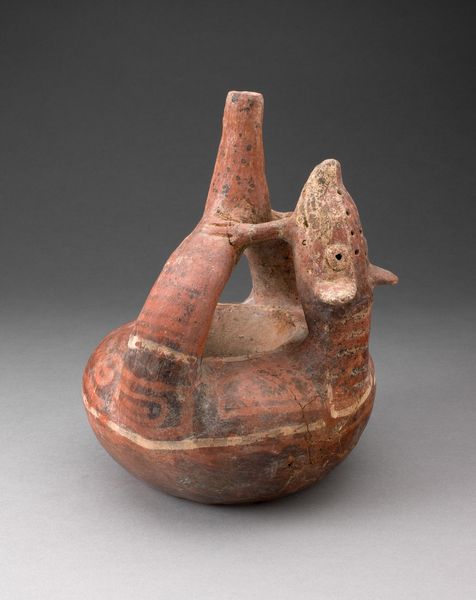
Double-Chambered Vessel with Serrated Stirrup Spout in Form of Human Head Possibly 1200 - 1450
0:00
0:00
ceramic, sculpture, terracotta
#
sculpture
#
ceramic
#
jewelry design
#
figuration
#
form
#
sculpture
#
terracotta
#
indigenous-americas
Dimensions: H. 16.2 cm (6 3/8 in.)
Copyright: Public Domain
Editor: This ceramic sculpture, a "Double-Chambered Vessel with Serrated Stirrup Spout in Form of Human Head," likely created between 1200 and 1450 by the Chimú culture, has a kind of solemn, weighty presence. The smooth, dark ceramic is very striking. What stories does this vessel hold, in your opinion? Curator: This piece offers us a powerful lens through which to examine power dynamics within the Chimú society. The human head, rendered in such a formal style, wasn't just decorative. Think about who was represented, and who was doing the representing. What social structures and belief systems might it reinforce? Editor: It makes me wonder if it represents someone specific, maybe a ruler or deity? The spout has these small serrated edges like teeth and it almost seems threatening, or at least, authoritative. Curator: Precisely! The 'threatening' aspect you identified—could that reflect the realities of Chimú imperialism and warfare? Who benefitted from that system and how is that reflected here? How does its function as a vessel—something that holds and gives—complicate the reading? Editor: So, it’s not just about aesthetics. It reflects the politics and the complex social hierarchies of the time? Almost like propaganda, in a way? Curator: Absolutely! And how do we, as contemporary viewers, engage with these histories embedded within the artwork? Does simply appreciating its form absolve us from considering its ethical implications? Editor: I never considered it that way before! I will never look at ancient art in the same way. Curator: These objects are not just beautiful artifacts from the past; they're active participants in ongoing dialogues about power, representation, and justice. Engaging with these complexities is what makes art history truly meaningful.
Comments
No comments
Be the first to comment and join the conversation on the ultimate creative platform.
